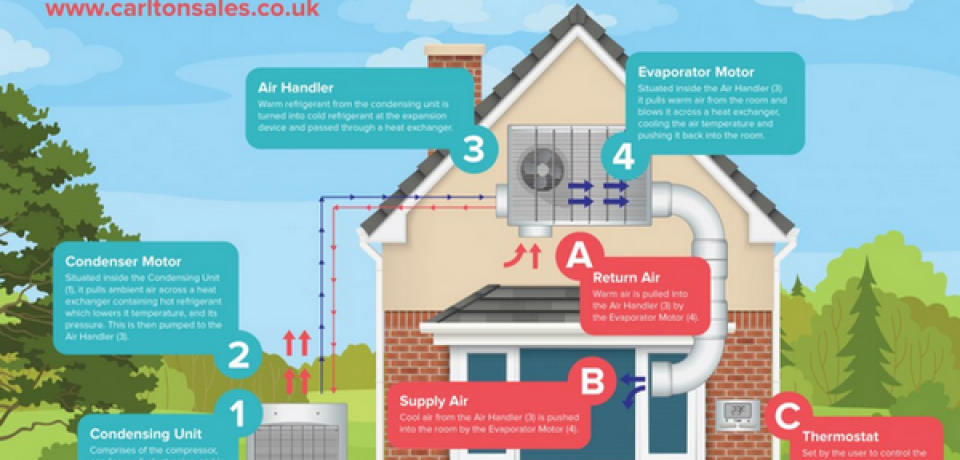The Future Of Home Heating - How Heatpump Technology Is Advancing
The Future Of Home Heating - How Heatpump Technology Is Advancing
Blog Article
Write-Up Created By-Fraser Roy
Heatpump will be a crucial innovation for decarbonising home heating. In a scenario consistent with federal governments' introduced power and environment dedications, their international ability doubles by 2030, while their share in heating rises to one-quarter.
They work best in well-insulated homes and rely upon electricity, which can be supplied from a renewable power grid. Technological advancements are making them a lot more effective, smarter and more affordable.
Fuel Cells
Heatpump use a compressor, cooling agent, coils and followers to relocate the air and warm in homes and appliances. They can be powered by solar power or electrical power from the grid. They have actually been acquiring appeal because of their low cost, peaceful operation and the capability to generate electrical power during peak power need.
Some business, like IdaTech and BG MicroGen, are servicing gas cells for home heating. These microgenerators can replace a gas central heating boiler and create several of a house's electrical needs with a link to the power grid for the remainder.
Yet there are factors to be cynical of using hydrogen for home heating, Rosenow says. It would certainly be pricey and inefficient contrasted to other modern technologies, and it would include in carbon emissions.
Smart and Connected Technologies
Smart home innovation enables property owners to attach and manage their gadgets from another location with using smart device applications. As an example, clever thermostats can discover your home heating preferences and automatically get used to optimize power usage. Smart illumination systems can be controlled with voice commands and instantly shut off lights when you leave the area, minimizing energy waste. And wise plugs can check and handle your electrical use, allowing you to recognize and restrict energy-hungry appliances.
The tech-savvy house portrayed in Carina's interview is an excellent image of just how owners reconfigure area heating techniques in the light of brand-new smart home innovations. They count on the gadgets' automated functions to execute everyday changes and concern them as a hassle-free ways of conducting their home heating techniques. Because of this, they see no reason to adapt their techniques further in order to enable flexibility in their home energy demand, and interventions aiming at doing so might face resistance from these households.
Electricity
Since heating up homes accounts for 13% of US discharges, a button to cleaner options might make a huge distinction. Yet the technology faces difficulties: It's pricey and needs substantial home remodellings. And it's not constantly compatible with renewable resource sources, such as solar and wind.
Until just recently, electric heatpump were too costly to compete with gas designs in the majority of markets. Yet brand-new technologies in design and products are making them much more economical. And better cool environment performance is enabling them to work well also in subzero temperatures.
https://www.nytimes.com/2020/11/27/realestate/homeownership.html in decarbonising home heating may be the use of warm networks, which draw heat from a main source, such as a nearby river or sea inlet, and disperse it to a network of homes or buildings. That would certainly minimize carbon exhausts and enable families to make use of renewable resource, such as eco-friendly electrical power from a grid provided by renewables. This option would be much less costly than changing to hydrogen, a fossil fuel that calls for new framework and would only minimize carbon dioxide exhausts by 5 percent if coupled with improved home insulation.
Renewable resource
As electrical power rates go down, we're beginning to see the same fad in home heating that has driven electric automobiles into the mainstream-- however at an even quicker pace. The strong environment instance for impressive homes has actually been pressed further by new research study.
Renewables represent a substantial share of contemporary warm consumption, but have actually been given limited policy attention worldwide contrasted to other end-use sectors-- and also less attention than power has. Partially, this shows a mix of customer inertia, split motivations and, in many countries, subsidies for fossil fuels.
New modern technologies can make the change much easier. For example, heat pumps can be made a lot more power reliable by changing old R-22 cooling agents with brand-new ones that don't have the high GWPs of their predecessors. Some professionals additionally imagine district systems that attract warmth from a neighboring river or sea inlet, like a Norwegian arm. The cozy water can after that be utilized for cooling and heating in an area.